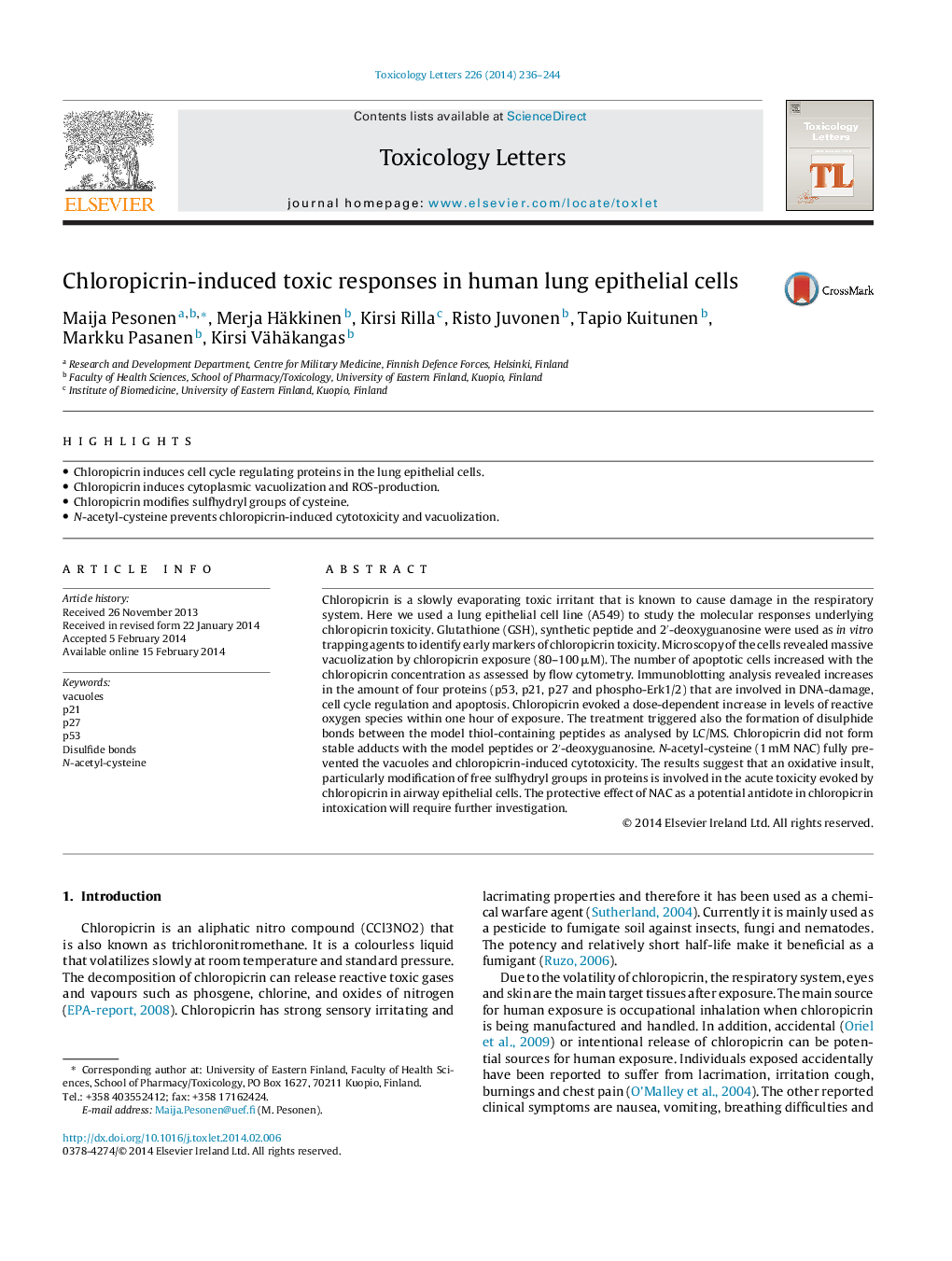| کد مقاله | کد نشریه | سال انتشار | مقاله انگلیسی | نسخه تمام متن |
|---|---|---|---|---|
| 5860367 | 1133180 | 2014 | 9 صفحه PDF | دانلود رایگان |
عنوان انگلیسی مقاله ISI
Chloropicrin-induced toxic responses in human lung epithelial cells
ترجمه فارسی عنوان
پاسخ سمی ناشی از کلورپیکرین در سلولهای اپیتلیال ریه انسان
دانلود مقاله + سفارش ترجمه
دانلود مقاله ISI انگلیسی
رایگان برای ایرانیان
کلمات کلیدی
موضوعات مرتبط
علوم زیستی و بیوفناوری
علوم محیط زیست
بهداشت، سم شناسی و جهش زایی
چکیده انگلیسی
Chloropicrin is a slowly evaporating toxic irritant that is known to cause damage in the respiratory system. Here we used a lung epithelial cell line (A549) to study the molecular responses underlying chloropicrin toxicity. Glutathione (GSH), synthetic peptide and 2â²-deoxyguanosine were used as in vitro trapping agents to identify early markers of chloropicrin toxicity. Microscopy of the cells revealed massive vacuolization by chloropicrin exposure (80-100 μM). The number of apoptotic cells increased with the chloropicrin concentration as assessed by flow cytometry. Immunoblotting analysis revealed increases in the amount of four proteins (p53, p21, p27 and phospho-Erk1/2) that are involved in DNA-damage, cell cycle regulation and apoptosis. Chloropicrin evoked a dose-dependent increase in levels of reactive oxygen species within one hour of exposure. The treatment triggered also the formation of disulphide bonds between the model thiol-containing peptides as analysed by LC/MS. Chloropicrin did not form stable adducts with the model peptides or 2â²-deoxyguanosine. N-acetyl-cysteine (1 mM NAC) fully prevented the vacuoles and chloropicrin-induced cytotoxicity. The results suggest that an oxidative insult, particularly modification of free sulfhydryl groups in proteins is involved in the acute toxicity evoked by chloropicrin in airway epithelial cells. The protective effect of NAC as a potential antidote in chloropicrin intoxication will require further investigation.
ناشر
Database: Elsevier - ScienceDirect (ساینس دایرکت)
Journal: Toxicology Letters - Volume 226, Issue 2, 21 April 2014, Pages 236-244
Journal: Toxicology Letters - Volume 226, Issue 2, 21 April 2014, Pages 236-244
نویسندگان
Maija Pesonen, Merja Häkkinen, Kirsi Rilla, Risto Juvonen, Tapio Kuitunen, Markku Pasanen, Kirsi Vähäkangas,
